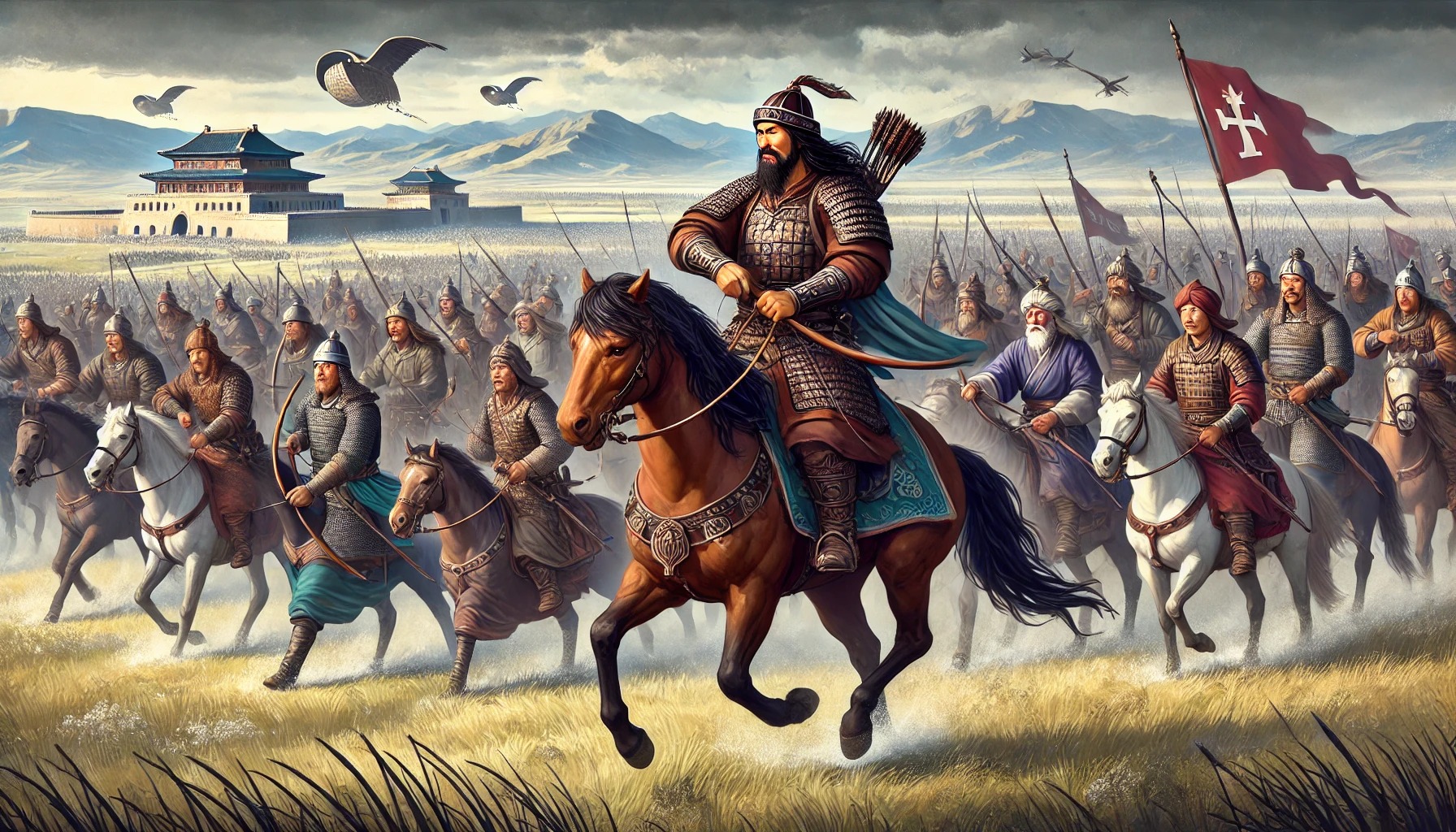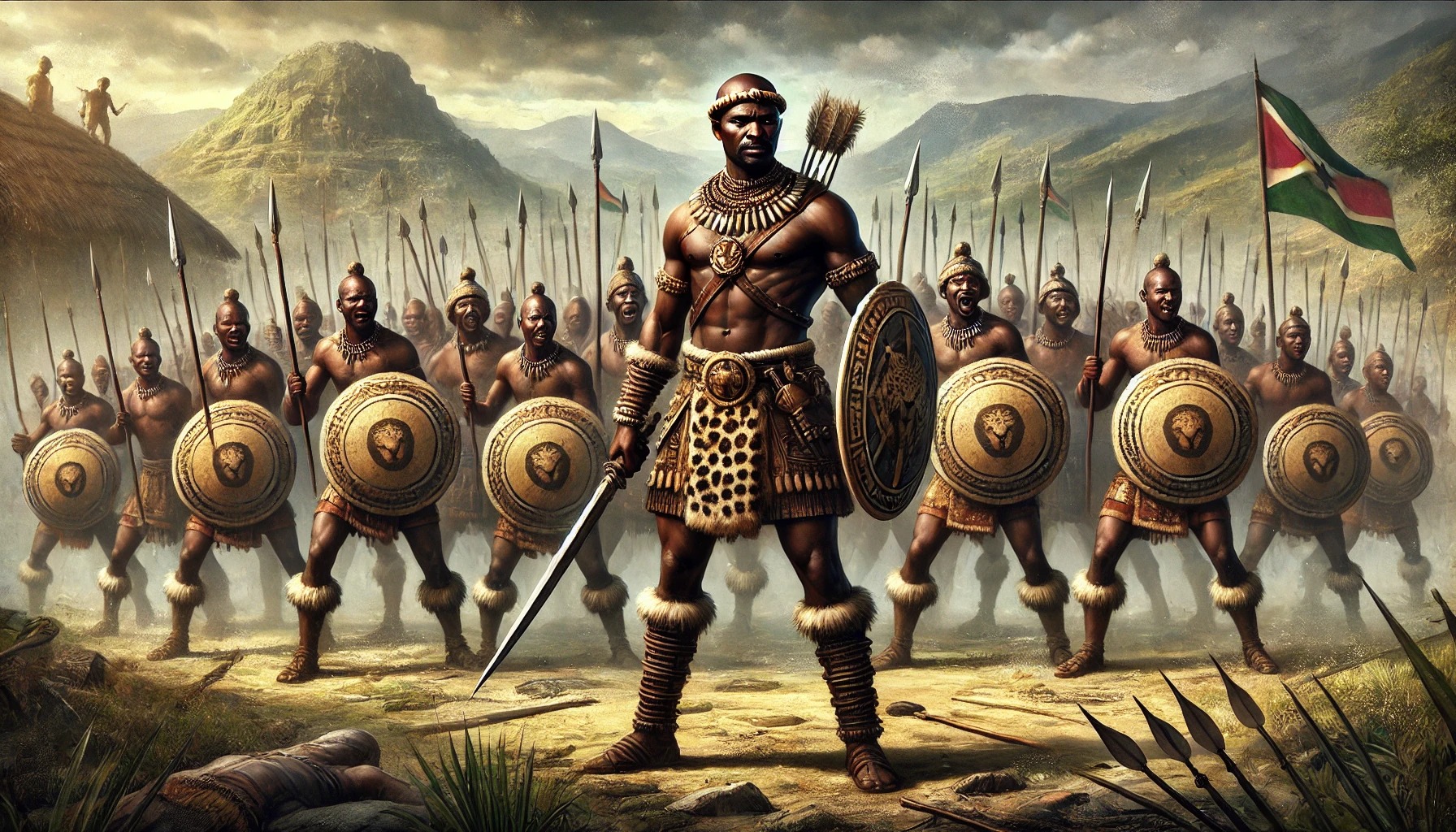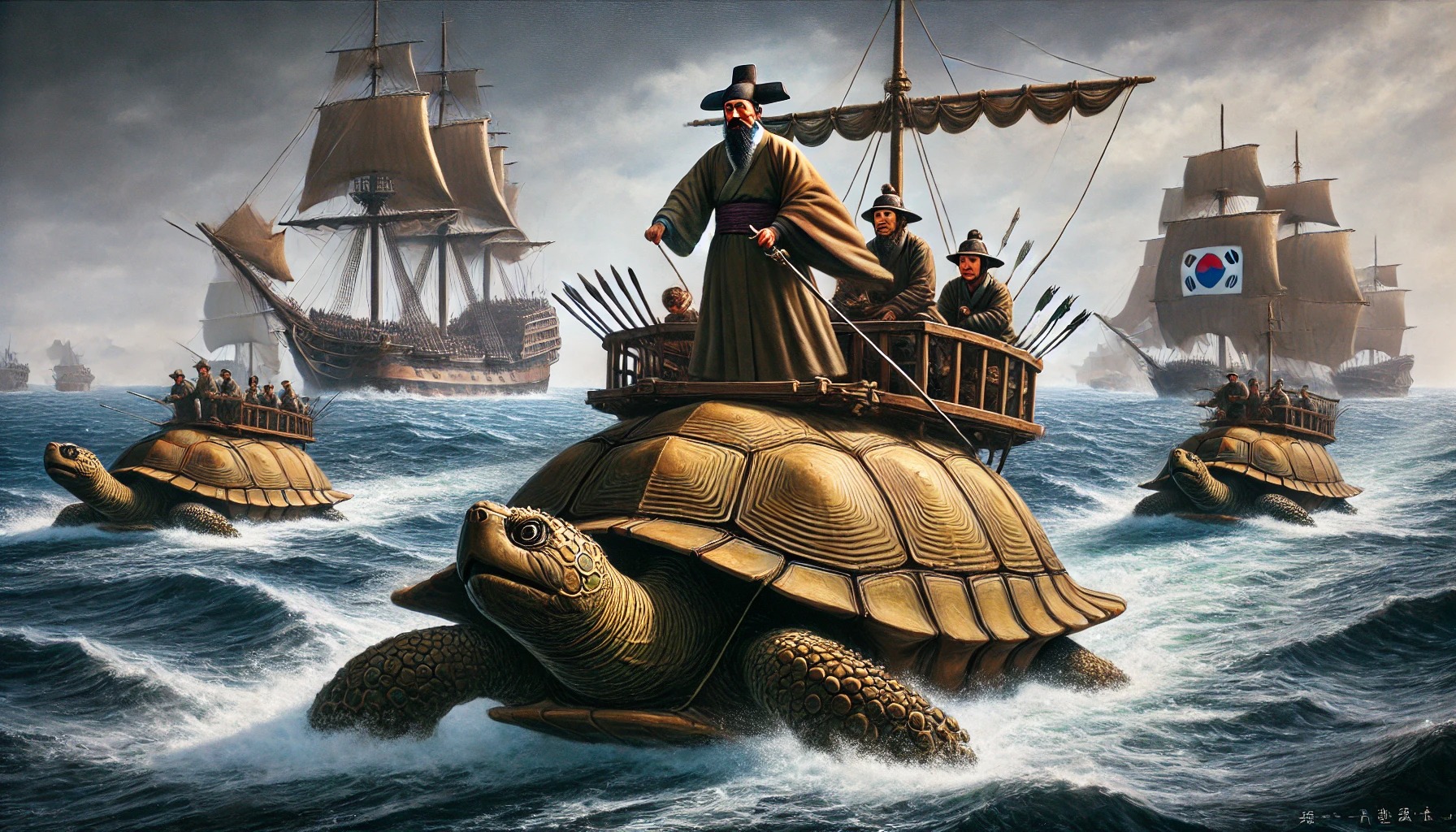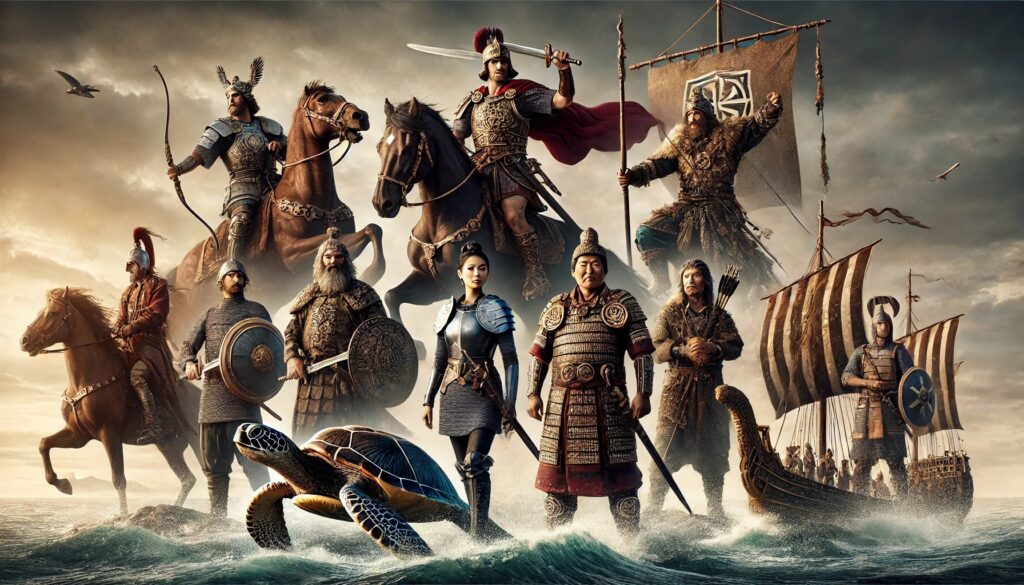Throughout history, warriors have shaped the destiny of nations, led revolutions, and embodied ideals of bravery, skill, and honor. These individuals, revered for their combat prowess, leadership, and battlefield achievements, left indelible marks on both their contemporaries and future generations. This guide delves into the lives and legacies of some of the greatest warriors of all time, spanning different eras, cultures, and warfare styles.
1. Alexander the Great (356–323 BCE)
Military Genius and Conqueror of the Ancient World
Alexander III of Macedon, commonly known as Alexander the Great, stands as one of the most successful military commanders in history. Ascending to the throne of Macedon at the age of 20, he embarked on a remarkable series of campaigns that would see him conquer most of the known world by the time of his death at just 32.
- Key Achievements:
- Led the Macedonian phalanx, a disciplined and innovative infantry force, across vast territories.
- Defeated the Persian Empire in a series of battles, including the legendary Battle of Gaugamela in 331 BCE.
- Expanded his empire from Greece to Egypt, and as far east as India, blending cultures in what would later be known as the Hellenistic Era.
Tactical Brilliance: Alexander was unmatched in his ability to adapt to different battle conditions, employing both superior strategy and psychological warfare to intimidate his enemies before ever engaging them.
2. Genghis Khan (c. 1162–1227)
The Mongol Emperor Who Built the Largest Land Empire
Temujin, later known as Genghis Khan, united the Mongol tribes and created an empire that stretched from East Asia to the edges of Europe. His unparalleled skill in horseback warfare and the effective use of mobility, surprise, and adaptability earned him a fearsome reputation.
- Key Achievements:
- Founded the Mongol Empire, which at its peak controlled over 12 million square miles.
- Known for his ruthlessness, he utilized terror as a weapon to ensure swift victories.
- Revolutionized warfare with his cavalry’s precision, speed, and the coordination of flanking maneuvers.
Legacy: Genghis Khan not only changed the face of warfare but also influenced global trade and culture. The Silk Road flourished under Mongol protection, and his descendants ruled vast territories, including China under the Yuan Dynasty.

3. Leonidas I of Sparta (540–480 BCE)
The Hero of Thermopylae
Leonidas, the king of Sparta, epitomized the warrior ethos of ancient Greece, particularly the Spartan ideal of discipline and sacrifice. His stand at the Battle of Thermopylae against the Persian Empire became a symbol of courage against overwhelming odds.
- Key Achievements:
- Led a small force of 300 Spartans, supported by a few thousand other Greek soldiers, in a legendary defense against the massive Persian army at Thermopylae in 480 BCE.
- Delayed the Persians long enough to allow the Greek states to organize for future victories, laying the groundwork for the eventual defeat of the Persians.
Legacy: Leonidas’s name became synonymous with heroism and self-sacrifice, immortalized in both ancient and modern literature. His leadership, despite the odds, demonstrated the enduring power of tactical discipline and unity in warfare.
4. Joan of Arc (1412–1431)
The Maid of Orléans and France’s Inspirational Warrior Saint
Joan of Arc, a peasant girl from Domrémy, France, rose to prominence during the Hundred Years’ War between France and England. Believing she was divinely guided, she led French forces to key victories, reinvigorating French morale and altering the course of the war.
- Key Achievements:
- At 17, led French forces to victory in the Siege of Orléans, marking a turning point in the war.
- Played a critical role in ensuring the coronation of Charles VII as King of France, strengthening French unity.
Legacy: Joan’s impact went beyond her battlefield successes. She became a symbol of faith, courage, and French nationalism. Executed at the age of 19, she was later canonized as a saint and remains one of history’s most enduring female warriors.
5. Napoleon Bonaparte (1769–1821)
Master Tactician and Emperor of France
Napoleon Bonaparte, a French military and political leader, dominated European affairs for over a decade in the early 19th century. Known for his innovative strategies and adaptability in battle, Napoleon led France to numerous victories, redefining military tactics and influencing armies worldwide.
- Key Achievements:
- Won stunning victories at battles such as Austerlitz (1805), where he decisively defeated a larger Russo-Austrian army.
- His Napoleonic Wars reshaped Europe, leading to the spread of ideas from the French Revolution and setting the stage for modern nation-states.
Legacy: Napoleon’s military genius is studied in military academies worldwide, particularly for his use of massed artillery, corps systems, and rapid maneuvers. Though his empire eventually collapsed, his influence on warfare and law (Napoleonic Code) remains significant.
6. Shaka Zulu (c. 1787–1828)
The Zulu Warrior-King and Tactical Innovator
Shaka, king of the Zulu Kingdom, was one of the most formidable military leaders in African history. He revolutionized Zulu warfare with innovations in both weapons and tactics, forging a powerful kingdom in the early 19th century.
- Key Achievements:
- Transformed the Zulu military by introducing the iklwa (a short stabbing spear) and improving the traditional Zulu shield.
- Developed the “bull horn” formation, a tactic involving flanking attacks that enveloped and crushed enemy forces.
Legacy: Shaka’s reforms enabled the Zulu Kingdom to dominate much of southern Africa and defend against colonial encroachment for decades. His leadership and innovations are studied as examples of indigenous military genius.

7. Miyamoto Musashi (1584–1645)
Japan’s Legendary Samurai and Swordmaster
Miyamoto Musashi was one of Japan’s most famous swordsmen and is celebrated for his undefeated record in duels and his philosophy of strategy, captured in his famous work, The Book of Five Rings.
- Key Achievements:
- Won over 60 duels, often against highly skilled opponents, and was known for his unorthodox style, including the use of two swords.
- His philosophical writings continue to influence modern martial arts and business strategies.
Legacy: Musashi’s mastery of combat and philosophy of adaptability and psychological awareness in warfare made him a revered figure not only in samurai culture but also in global martial traditions.
8. Saladin (1137–1193)
The Noble Sultan Who Defended Islam and Recaptured Jerusalem
Sultan Salah ad-Din Yusuf ibn Ayyub, known as Saladin, was a Kurdish leader who united Muslim forces and played a key role in the Crusades, most notably recapturing Jerusalem in 1187.
- Key Achievements:
- Defeated the Crusader forces at the Battle of Hattin, reclaiming Jerusalem and much of the Holy Land for Islam.
- Known for his chivalry and kindness, even to his enemies, Saladin allowed Christian inhabitants of Jerusalem safe passage after its recapture.
Legacy: Saladin’s leadership was characterized by both military success and a code of ethics, earning him admiration from both Muslim and Christian chroniclers. His legacy continues to shape the image of a noble warrior-leader in Islamic history.
9. Spartacus (c. 111–71 BCE)
The Gladiator Who Defied Rome
A Thracian gladiator, Spartacus led one of the largest slave revolts in Roman history. Though ultimately defeated, his rebellion challenged the might of the Roman Republic and left an enduring symbol of resistance against oppression.
- Key Achievements:
- Led a slave uprising that grew to over 100,000 fighters and engaged Roman legions in several battles.
- His defiance against Roman authority lasted for two years, and he was feared across the Republic.
Legacy: Spartacus became a symbol of rebellion and freedom. His name has been invoked by revolutionaries and freedom fighters throughout history, emphasizing his role as a warrior who fought for justice against a powerful empire.
10. Hannibal Barca (247–183 BCE)
The Tactical Genius Who Threatened Rome
Hannibal Barca, a Carthaginian general, is renowned for his daring military campaigns during the Second Punic War. His brilliant tactics, especially in the Battle of Cannae, where he annihilated a Roman army twice the size of his own, have been studied by military strategists for centuries.
- Key Achievements:
- Led a daring invasion of Italy by crossing the Alps with war elephants and a multicultural army.
- Won decisive victories against Rome, including the legendary Battle of Cannae (216 BCE), where he encircled and destroyed a vastly superior Roman force.
Legacy: Hannibal’s innovative battle strategies, including his use of terrain, deception, and ambushes, are still revered by military historians. Despite ultimately losing the war, his near destruction of Rome cemented his place as one of history’s greatest tacticians.
11. Vlad the Impaler (1431–1476)
The Ruthless Defender of Wallachia
Vlad III, known as Vlad the Impaler, was a 15th-century ruler of Wallachia (modern-day Romania) and a fierce defender against Ottoman expansion. He is infamous for his brutal tactics, including impaling his enemies, which earned him a fearsome reputation in Europe.
- Key Achievements:
- Fought relentlessly to protect his kingdom from Ottoman invasion.
- Known for his psychological warfare, he impaled tens of thousands of enemies to deter invasion, making his capital infamous as “the Forest of the Impaled.”
Legacy: Vlad’s ruthless methods were effective in defending Wallachia, though they earned him a dark legacy. His exploits and reputation influenced the legend of Count Dracula, intertwining his historical presence with literary myth.
12. William Wallace (1270–1305)
Scotland’s National Hero and Freedom Fighter
William Wallace led the Scottish resistance against English rule in the late 13th century. His story, popularized by the film Braveheart, embodies the struggle for Scottish independence and the fierce defense of freedom.
- Key Achievements:
- Led Scottish forces to victory at the Battle of Stirling Bridge (1297), where his smaller army decisively defeated a well-equipped English force.
- Played a key role in the ongoing struggle for Scottish independence until his capture and execution by the English.
Legacy: Wallace’s martyrdom and his relentless campaign against English dominance inspired generations of Scots. He became a symbol of national pride, and his leadership during the Wars of Scottish Independence laid the groundwork for eventual Scottish victory under Robert the Bruce.
13. Attila the Hun (406–453 CE)
The Scourge of God Who Terrified Rome
Attila, ruler of the Huns, was one of the most feared enemies of the Roman Empire. Leading a vast confederation of Hunnic, Gothic, and other barbarian tribes, Attila ravaged Eastern and Western Roman territories, earning the moniker “The Scourge of God.”
- Key Achievements:
- Led devastating raids across the Eastern Roman Empire, forcing Emperor Theodosius II to pay massive tributes.
- Invaded Gaul (modern-day France) and Italy, bringing Rome to the brink of collapse.
Legacy: Attila’s near destruction of the Western Roman Empire cemented his reputation as one of the greatest military leaders of the barbarian invasions. His legacy persists in European folklore as a symbol of untamable ferocity.
14. Richard the Lionheart (1157–1199)
The Crusader King of England
King Richard I of England, known as Richard the Lionheart, was a legendary figure in the Crusades, particularly the Third Crusade. Revered for his military prowess, courage, and chivalry, he became an iconic figure in medieval European history.
- Key Achievements:
- Led the English forces during the Third Crusade, where he scored notable victories against the Muslim leader Saladin, including the capture of Acre.
- Negotiated a truce with Saladin, allowing Christian pilgrims access to Jerusalem, though he was unable to retake the city itself.
Legacy: Richard’s exploits in the Holy Land made him a celebrated figure of Christian Europe, and his reputation as a warrior-king persisted long after his death. Despite spending little time in England, he remains one of its most famous monarchs.
15. Boudica (c. 30–61 CE)
The Warrior Queen Who Defied Rome
Boudica, queen of the Iceni tribe in Britain, led one of the most significant revolts against the Roman Empire. Her uprising came in response to Roman oppression, and though ultimately unsuccessful, her fierce resistance became legendary.
- Key Achievements:
- Led a large-scale rebellion against Roman rule in Britain in 60–61 CE, razing Roman settlements, including Londinium (modern-day London).
- Her forces inflicted heavy casualties on the Romans before being defeated in battle.
Legacy: Boudica became a symbol of resistance against tyranny and is celebrated as a national heroine in Britain. Her courage and leadership in the face of overwhelming odds have made her an enduring figure of feminist and nationalist movements.
16. Subutai (1176–1248)
Genghis Khan’s Greatest General
Subutai was the most accomplished general of Genghis Khan’s Mongol Empire, renowned for his ability to plan and execute campaigns across vast distances. He played a crucial role in many of the Mongol Empire’s most significant conquests.
- Key Achievements:
- Masterminded campaigns that extended Mongol control into Eastern Europe, defeating forces in Russia, Hungary, and Poland.
- Led a combined Mongol army to victory at the Battles of Kalka River and Mohi, where his tactical brilliance and use of feigned retreats resulted in crushing defeats for European armies.
Legacy: Subutai’s legacy as one of the most successful military commanders in history is secured by his ability to lead far-flung, synchronized campaigns across Asia and Europe. His strategies influenced modern warfare, especially in terms of logistics and mobility.
17. Yi Sun-sin (1545–1598)
Korea’s Naval Genius and Defender Against Japan
Yi Sun-sin, a Korean admiral, is celebrated for his brilliant naval strategies during the Imjin War (1592–1598), where he successfully defended Korea from Japanese invasions. His leadership and innovative tactics turned the tide of the war.
- Key Achievements:
- Won all 23 naval engagements he fought, including the famous Battle of Myeongnyang, where he defeated a Japanese fleet despite being vastly outnumbered.
- Introduced the “turtle ship,” an early form of ironclad warship, which played a significant role in Korea’s naval dominance.
Legacy: Yi Sun-sin is regarded as one of the greatest naval commanders in history. His tactics, particularly the use of geographic advantages and superior ship designs, helped protect Korea from colonization, and he remains a national hero.

18. El Cid (1043–1099)
The Champion of Christian Spain
Rodrigo Díaz de Vivar, known as El Cid, was a Castilian nobleman and military leader who played a key role in the Reconquista—the Christian effort to reclaim Spain from Muslim rule. His exploits became the stuff of legend in medieval Spain.
- Key Achievements:
- Led both Christian and Muslim forces in various campaigns, displaying tactical flexibility and diplomatic skill.
- Captured the city of Valencia in 1094, which he ruled until his death.
Legacy: El Cid became a legendary figure in Spanish history and literature, particularly through the Cantar de Mio Cid, an epic poem detailing his life. He remains an icon of the Christian reconquest of Spain and a symbol of chivalry and honor.
19. Geronimo (1829–1909)
The Apache Warrior Who Defied American and Mexican Armies
Geronimo, a leader of the Apache tribe, was one of the last Native American leaders to resist the U.S. government’s efforts to confine his people to reservations. His guerrilla tactics and deep knowledge of the terrain allowed him to evade capture for years.
- Key Achievements:
- Led multiple raids and uprisings against both Mexican and U.S. forces, defending Apache lands from encroachment.
- His resistance continued for decades, and his eventual surrender in 1886 marked the end of major Native American armed resistance.
Legacy: Geronimo is remembered as a symbol of Native American resistance to colonization and oppression. His resilience and leadership during the Apache Wars earned him legendary status, and he remains a figure of cultural significance for Native American history.
Conclusion
These additional warriors continue to showcase the diversity of military leadership and courage across different periods and regions. From ancient battlefield commanders like Hannibal to guerrilla leaders like Geronimo, each of these figures displayed a unique blend of tactical genius, resilience, and leadership. Their legacies, preserved in history and legend, serve as reminders of the impact individuals can have on shaping the course of history. Together, these 18 warriors represent the pinnacle of human combat ability, bravery, and strategic thinking, leaving behind legacies that continue to inspire and educate.

